(453 products available)





























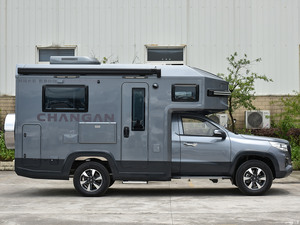








































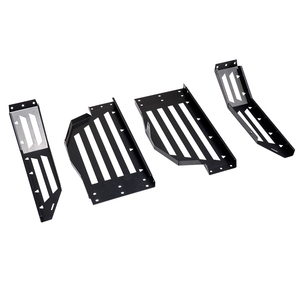















































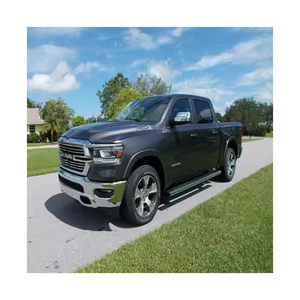


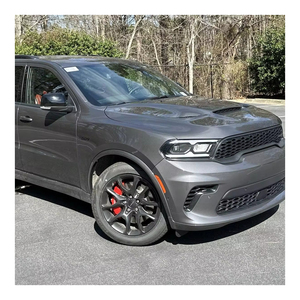





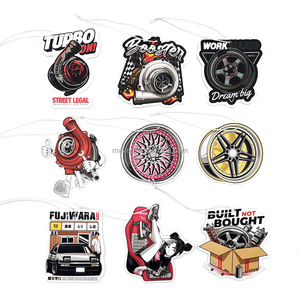









































When choosing turbo for a car, buyers must consider various factors, including the engine size, driving style, and the kind of performance they want. There are different types of turbochargers, each with its advantages and disadvantages. Here are some common types of turbochargers:
Single Turbo
Single turbochargers are the most common type in modern vehicles. They are affordable, simple, and reliable. They use a single turbine and compressor to boost the engine's airflow. Single turbos are great for everyday driving and provide a good balance of power and fuel efficiency. However, they might have turbo lag, which is a delay in power delivery.
Twin Turbo
Twin turbochargers use two turbines and compressors, either working together or separately. They provide more power and quicker response than single turbos. Twin turbos are excellent for high-performance vehicles and offer a broader power band. However, they are more complex and can be expensive.
Twin-scroll Turbo
Twin-scroll turbos are designed to improve efficiency and reduce turbo lag. They have two inlet ports that collect exhaust gases in separate channels. This design minimizes interference between the turbine's inlet and maximizes the turbo's boost. Twin-scroll turbos provide quicker spool time and smoother power delivery.
Variable Geometry Turbo (VGT)
Variable Geometry Turbo (VGT) is a common type of turbocharger in diesel engines. It adjusts the turbine's inlet guide vanes to optimize airflow across different engine speeds. This technology improves low-end torque and reduces turbo lag. VGTs are suitable for heavy-duty vehicles and applications requiring high torque.
Electric Turbo Compresso
Electric turbo compressors (ETC) are an emerging technology in turbocharging. They use an electric motor to drive the compressor, eliminating turbo lag and providing instant boost. ETCs improve throttle response and overall engine performance. While still being developed, ETCs hold great promise for future turbocharged engines.
Specification when choosing turbo parts and understanding the needs of the end customers is key. Some of the common specifications to be aware of are:
Size:
Turbochargers come in different sizes. The size affects how much exhaust flow is needed and how much boost is created. A larger turbo needs more exhaust flow but produces more boost. A smaller turbo produces boost quickly but may not be able to produce as much boost.
Compressor Wheel:
The compressor wheel is responsible for moving air into the engine. The wheel size and shape affect how much air is moved and how quickly. A larger wheel moves more air but may cause lag, while a smaller wheel moves air quickly.
Turbine Wheel:
The turbine wheel is turned by the exhaust flow. Its size and design impact how the turbo responds. A heavier wheel may lead to lag, while a lighter one provides quicker response. The turbine wheel works with the exhaust system. The size must be compatible to avoid back pressure issues.
Boost Pressure:
Boost pressure is the force with which the compressor pushes air into the engine. Higher boost pressure results in more power. However, it should be within the engine's tolerable limits.
Material:
Turbo components are made from various materials. For example, the compressor housing may be aluminum or cast iron. Different materials offer varying durability, heat resistance, and weight.
When it comes to turbocharger maintenance, it is important to know that proper maintenance of the turbocharger is crucial for its longevity and optimal performance. Here are some turbocharger maintenance tips:
Use high-quality engine oil:
Engine oil lubricates the moving parts of the turbo and prevents wear. Using oil recommended by the vehicle manufacturer is important. The oil keeps the turbocharged car in good condition.
Regular oil changes:
Changing the engine oil regularly is important. Regular oil changes help remove dirt and debris that can damage the turbo. Follow the manufacturer's schedule for oil changes.
Air filter maintenance:
The air filter prevents dirt from entering the engine. A clogged air filter restricts airflow and can strain the turbo. Check the air filter often and change it when worn to keep the turbo healthy.
Cool down the turbo:
Letting the car idle for a few minutes before turning off the engine is important. This allows the turbo to cool down. Stopping the engine suddenly can damage the turbo over time.
Inspect the wastegate:
The wastegate controls boost pressure from the turbo. A faulty wastegate can cause underboost or overboost problems. Check the wastegate regularly and fix any issues to keep the turbo working right.
Maintain the cooling system:
The cooling system prevents the engine and turbo from overheating. Keeping the cooling system in good shape is important. Overheating can harm the turbocharger.
Avoid excessive load:
Too much weight slows down the car. It puts extra work on the turbo. Carrying excessive load regularly can strain the turbo and reduce its lifespan.
Choosing a turbo for any vehicle can be challenging because it involves understanding the nitty-gritty of how a turbo works and many other factors. Here are some of the key considerations that will help in choosing turbos:
Engine Size and Type
One of the most important factors to consider when choosing a turbo is the engine size and type. Generally, larger engines are capable of handling bigger turbos, while smaller engines are suited for smaller turbochargers. Also, the engine type matters when choosing a turbo. Gasoline engines require turbos that produce a higher pitch whine, while diesel engines need a turbo that produces a lower pitch rumble.
Turbo Size
The turbo size is one of the most significant factors when choosing a turbo. The right turbo size for a particular engine depends on the engine size, modification, and personal preference. Typically, a larger turbo will produce more power, but it may also cause turbo lag. On the other hand, a smaller turbo will spool quickly and generate boost sooner but may not produce enough power at higher RPMs.
Compressor and Turbine Wheels
The compressor and turbine wheel of a turbo determine the amount of air a turbo can move and the speed at which it spools. Buyers should opt for a turbo with wheels that align with the goals of the engine build. Larger wheels will offer more power at the expense of turbo lag, while smaller wheels will minimize lag but limit the overall power potential.
Boost Pressure
Another vital factor to consider when choosing a turbo is the boost pressure. The boost pressure is the amount of pressure the turbo generates to force more air into the engine. Choosing a turbo with the right boost level is crucial, as it can affect the engine's performance and longevity. Higher boost levels result in more power but can strain the engine and decrease fuel efficiency.
Turbo Lag
Turbo lag is the delay in the power delivery of a turbocharged when the throttle is pressed. The lag occurs because the turbine needs to spool up to speed, which takes time. When choosing a turbo, consider the turbo lag. If buyers want immediate power delivery, opting for a smaller turbo that spools quickly is advisable. But, if they are okay with a little delay and need more power overall, a larger turbo is the right choice.
Quality and Reliability
Choosing a reliable and high-quality turbo is crucial for optimal engine performance. Opt for reputable and well-known turbo manufacturers to ensure the turbo is built to last and of excellent quality. Also, reading customer reviews and recommendations can help choose a reliable turbo.
It's easy to replace a turbocharged engine, but the replacement process requires that the user be mechanically inclined. To get the choosing turbo replaced, follow the steps below:
1. Gather Necessary Tools and Parts
Get the right tools for the work that will be done. These tools include wrenches, sockets, pliers, screwdrivers, and torque wrench. Also, get a new turbocharger kit and the relevant oil to be used for lubrication.
2. Disconnect the Battery
For safety reasons, the battery should be disconnected before working on the vehicle.
3. Drain Engine Oil and Coolant
The engine oil and coolant should be drained as a precautionary measure before the turbocharger replacement begins.
4. Remove the Exhaust Downpipe
The exhaust downpipe connected to the old turbo is to be removed using the right tools.
5. Disconnect the Wastegate Actuator
Get the wastegate disconnected from the turbo. This is done by simply unscrewing it from the turbo.
6. Remove the Intake Pipe
Unscrew and remove the intake pipe connected to the old turbo. This pipe is responsible for bringing in air to the engine.
7. Disconnect Oil and Coolant Lines
Follow the lines from the turbo to the engine and disconnect them. This will disconnect the oil and coolant lines.
8. Remove the Old Turbocharger
Unscrew and remove the old turbo from the engine. This will complete the disassembly of the old turbo.
9. Install the New Turbocharger
Get the new turbocharged engine and install it. This is done by reversing the steps taken during the removal process.
10. Reconnect Oil and Coolant Lines
Get the oil and coolant lines reconnected to the engine and ensure there are no leaks.
11. Reconnect the Wastegate Actuator
Get the wastegate actuator connected to the turbo and ensure it's well screwed.
12. Reinstall the Exhaust Downpipe
Get the exhaust downpipe reinstalled and ensure all bolts are well tightened.
13. Reinstall the Intake Pipe
Get the intake pipe reinstalled and ensure all screws are well tightened.
14. Reconnect Battery
Reconnect the battery once the turbo replacement is done successfully.
Q1: Which is better, a turbocharged or naturally aspirated engine?
A1: Both engines have their pros and cons. However, the naturally aspirated engines are good for those who prefer a straightforward engine with no complications. The turbocharged engines are suitable for those who want more power from their engines without increasing the size of the engine.
Q2: How long do turbos last?
A2: Turbochargers can last for 150,000 to 200,000 miles. However, this can be achieved by proper maintenance and good driving habits.
Q3: How can one tell if a turbo is faulty?
A3: Warning signs of a faulty turbo include exhaust smoke, loss of acceleration, whining noise, and check engine light.